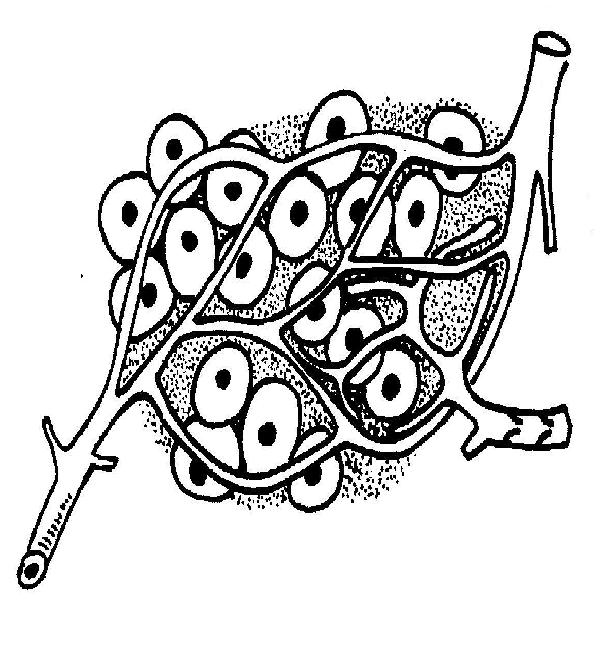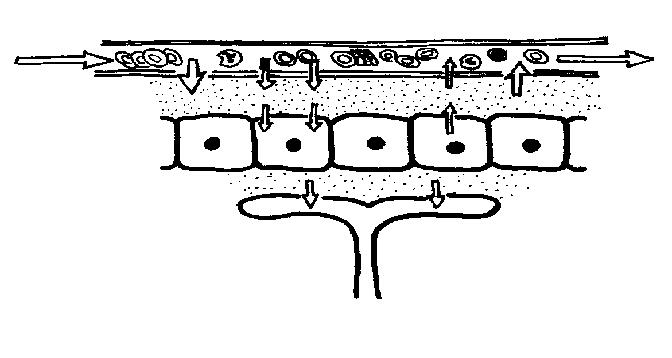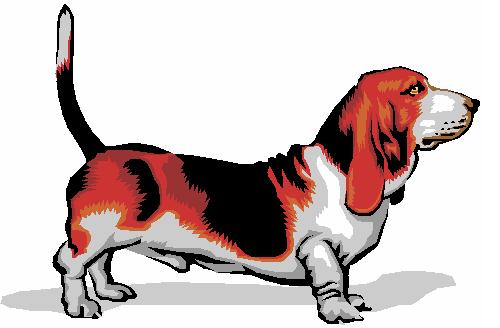The Anatomy and Physiology of Animals/Lymphatic System Worksheet
1. Add labels or colour in the diagram of a capillary bed and associated lymphatic vessels to show:
- The arteriole- red; the venule - blue; the capillaries red turning to blue;
- the lymphatic capillaries - dark green; the tissue fluid – light green
Also add arrows to show the direction of flow of the blood and the direction of flow of the lymph.
2. How is tissue fluid formed?
3. Add the following labels to the diagram showing the formation of lymph below.
- Blood capillary; blood entering capillary at high pressure; blood leaving capillary at low pressure
- tissue fluid; lymph; lymphatic vessel; cells of tissue
4. Compare plasma, serum, tissue fluid and lymph by filling in the cells in the table below.
| Blood plasma | Serum | Tissue fluid | Lymph | |
| Definition/where found | Clear fluid
part of blood |
? | ? | Fluid in
lymphatic vessels |
5. When lymph has entered the lymphatics, how does it make its way back to the blood stream?
6. This is a function of lymph nodes:
- a) Adding protein to lymph
- b) Filtering bacteria and debris from lymph
- c) Producing granulocytes
- d) Helping blood to clot
7. Mark the positions of the following lymph nodes on the picture of the dog below.
- Popliteal; superficial inguinal
- prescapular; axillary; parotid
8. Name three organs of the lymphatic system (other than lymph nodes).
- i. .................
- ii. ................
- iii ................
9. List three functions of the lymphatic system
- i. ....................
- ii.....................
- iii....................
10.
True or false?
- i. A major function of lymph nodes is to filter foreign substances from the lymph. T / F
- ii. Lymphatic vessels are identical in structure to veins. T / F
- iii. The heart beat helps push lymph along lymphatic vessels. T / F
- iv. The cisterna chyli and thoracic duct are parts of the lymphatic system. T / F
- v. The spleen is the largest lymphatic organ. T / F
- vi. The spleen is an important store of white blood cells. T / F
- vii. The thymus gland is located cranially to the heart T / F
- viii. A major function of the thymus is to produce monocytes. T / F
- ix. Peyers patches are located in the wall of the stomach. T / F
- x. The lymphatic system sometimes transports cancer cells around the body. T / F


